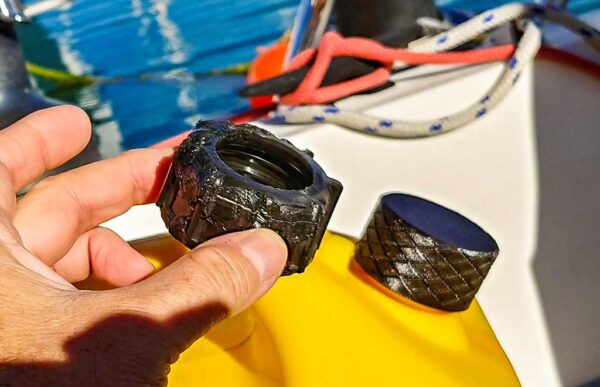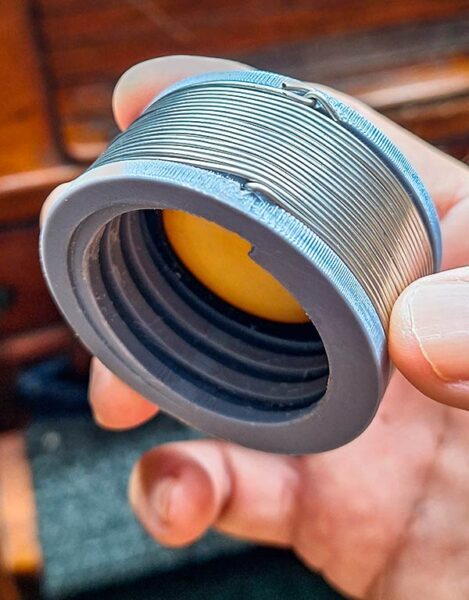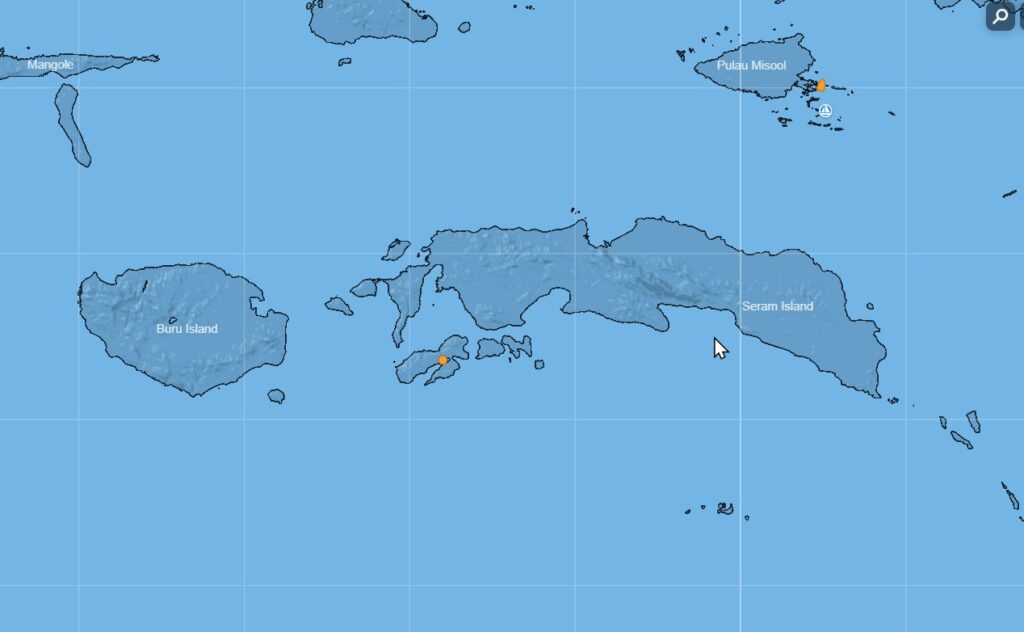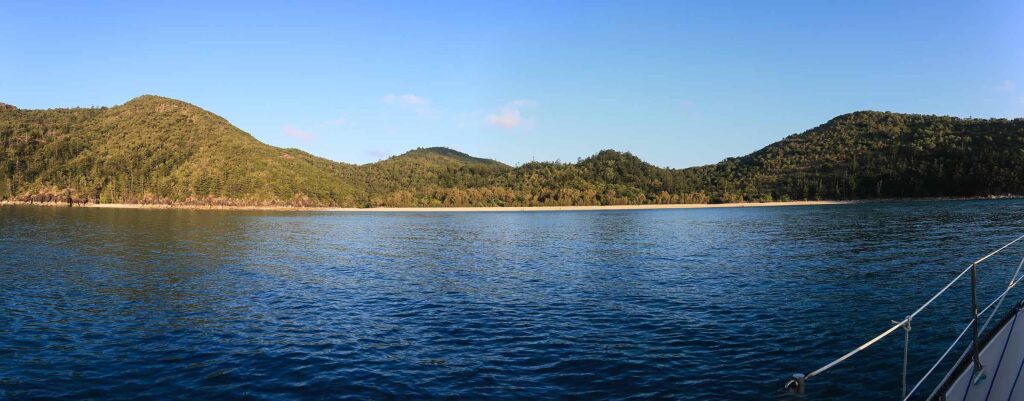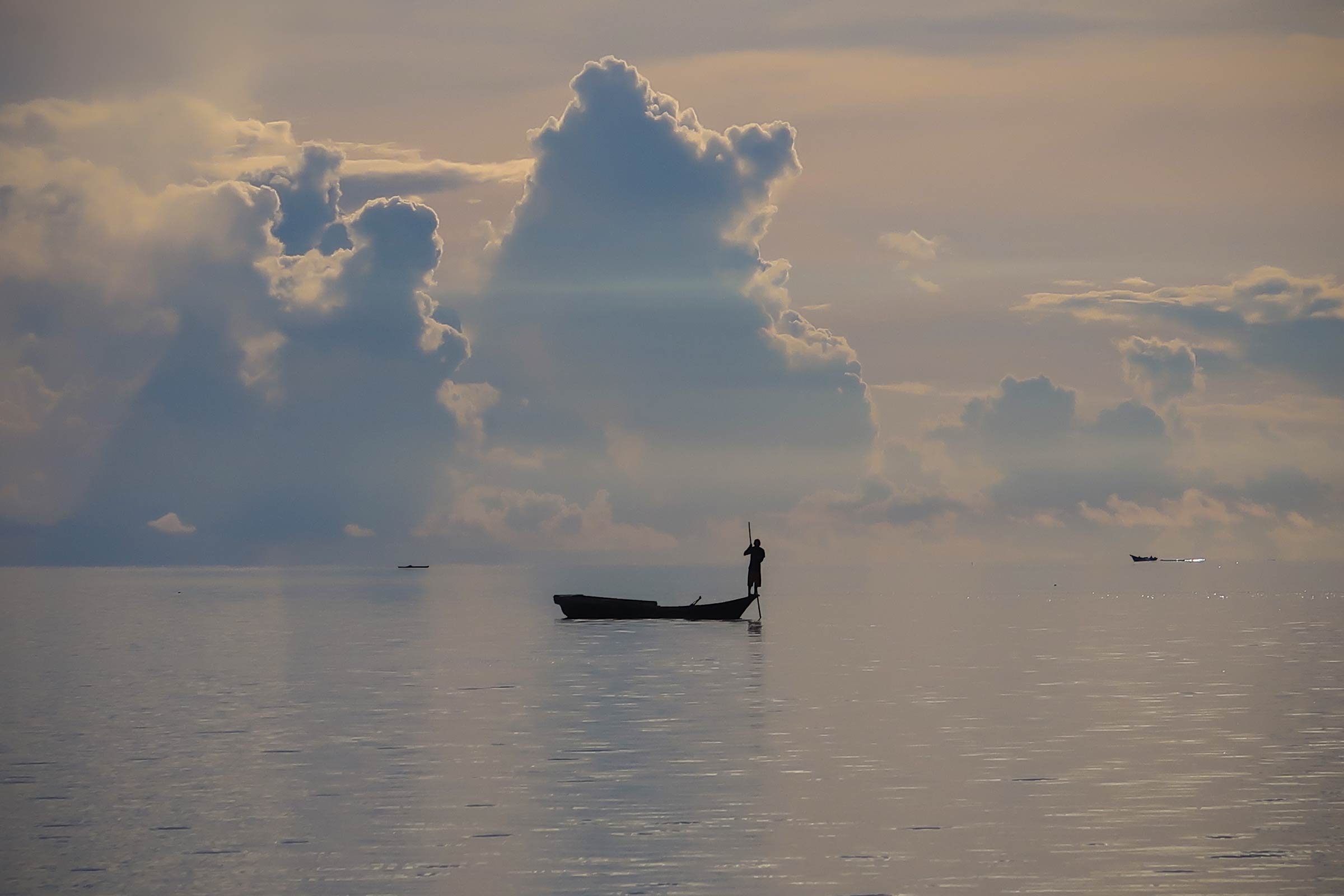January 24, 2024
We’ve been having problems with our Parsun 3.6HP 2-stroke outboard for the past few months. At first, I thought it was an ignition system issue, but after replacing all the components in that system with no change, I moved on to other possible causes.
The spark plug was fouling badly. After about 30 minutes to an hour of running, the plug would be so badly carboned up, the engine would just die and would not restart until I cleaned the plug. I thought that maybe the fuel was the issue, but no, not that either.
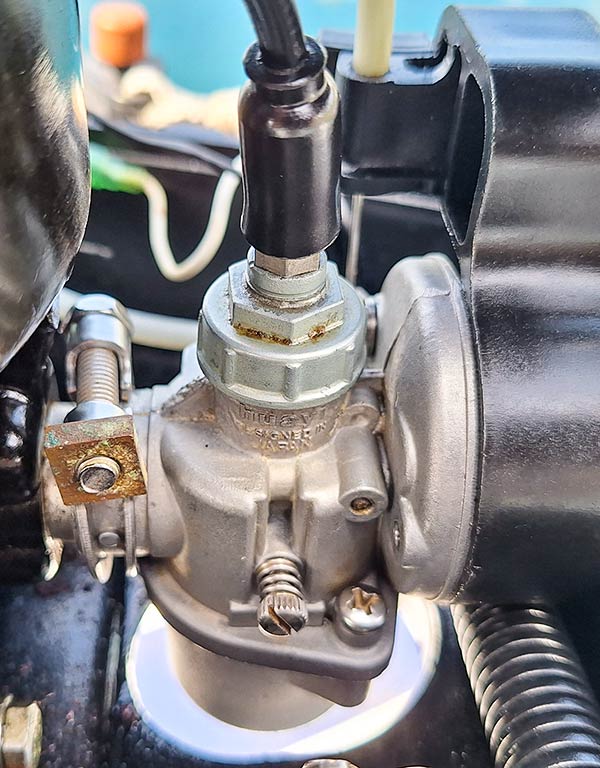
I took the carburetor apart to inspect and clean it. There was no obvious issue but I decided to try to replace the entire carburetor. Getting a new one was not a simple task here in Indonesia. Google showed me that quite a few other small engines use a carburetor that looks the same as mine. One was a Tohatsu and a local parts store was able to get one for me.
The Tohatsu part has some minor differences from the Parsun version. I was able to use a few of my old parts (choke and throttle attachment) to make it work. In doing so, I found something I hadn’t realized before.
I believed there was no mixture control on the Parsun carb other than the jet sizes. When I started swapping components, I found I was wrong. This is a little frustrating as there’s nothing I could find online or in the manual about this.
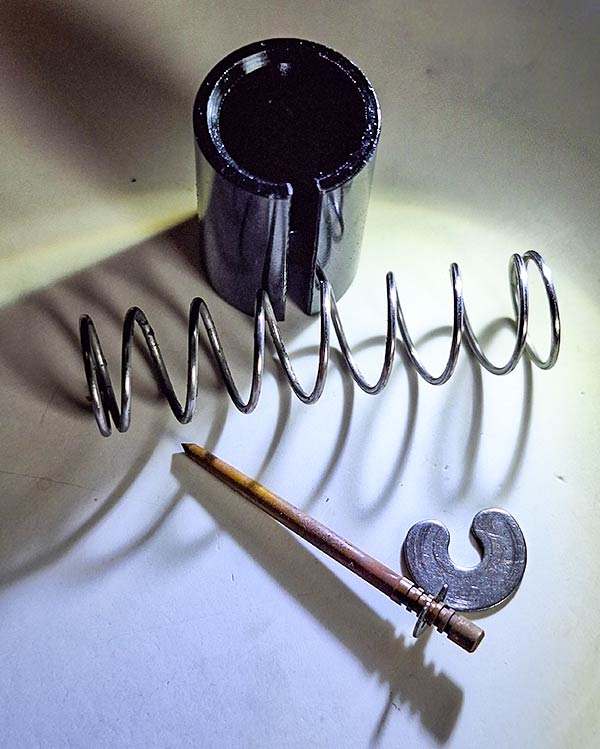
Above are the components that move in the carburetor to control the engine speed. The black cylinder moves up and down to control the air flow and the brass needle attached to the bottom of the cylinder controls the fuel flow.
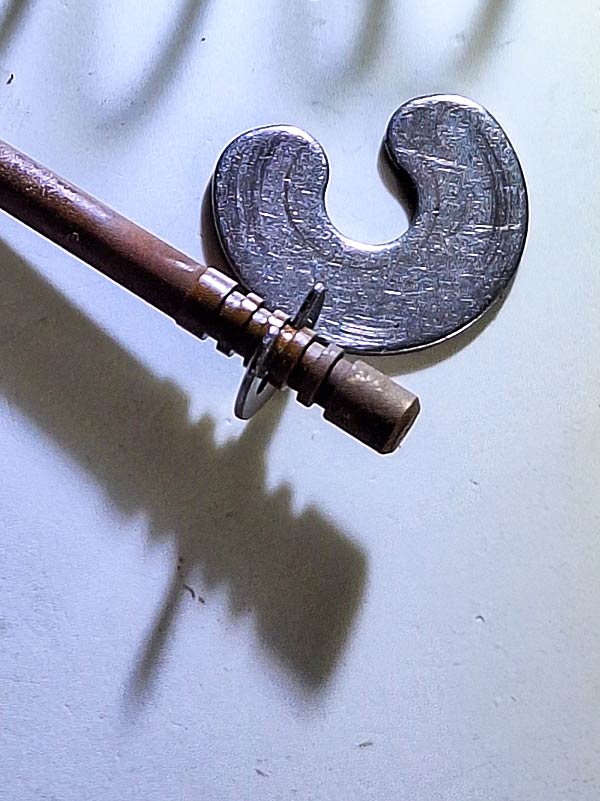
It turns out there’s a little circlip on the needle that sets its position relative to the cylinder. I might have been able to make the fuel mixture more lean by moving this circlip to a higher slot in the needle. Oh well. Live and learn.
I offer this information so that others might learn how to make this adjustment if necessary, though actually, the carburetors are so inexpensive that if I had access to a supply of them, I would have changed it out earlier.
It seems to run great now, though I haven’t really given it enough of a run to know for sure. It was too windy here today to risk having to row back to Legacy.
Update: January 25, 2024
We just took about a 45 minute test run and WOW, WOW, WOW! I don’t remember our outboard ever being this quiet and smooth. It just purrs. How can the carburetor make this kind of a difference?
I asked ChatGPT about this and here’s its response…
The carburetor plays a crucial role in the performance of your outboard motor, as it’s responsible for mixing the correct ratio of air and fuel necessary for the engine to run efficiently. When the carburetor is functioning properly, it ensures that the engine receives the optimal mixture, leading to several improvements:
1. **Improved Efficiency:** A well-adjusted carburetor ensures that the fuel is thoroughly mixed with air, which leads to more efficient combustion. This means that every drop of fuel is used effectively, contributing to smoother operation and less noise.
2. **Smooth Operation:** An engine with a properly functioning carburetor will typically run smoother. This is because the engine is receiving the right amount of fuel at the right time, reducing rough idling and enhancing overall performance.
3. **Reduced Noise:** Engines can be noisier when there’s an imbalance in the air-fuel mixture, often caused by a faulty carburetor. With a new carburetor that’s correctly adjusted, the engine runs more quietly as it’s operating in its optimal state.
4. **Better Throttle Response:** A new carburetor can improve the responsiveness of the engine to throttle adjustments. This means when you increase or decrease the throttle, the engine responds more quickly and smoothly, enhancing your control over the boat.
5. **Lower Emissions:** A correctly functioning carburetor also helps in reducing emissions. By ensuring that the fuel burns efficiently, it reduces the amount of unburnt fuel and other pollutants released into the environment.
In summary, replacing or repairing a carburetor can have a significant impact on the performance of your outboard motor, leading to quieter operation, smoother running, improved fuel efficiency, and better overall engine health.
-Rich

